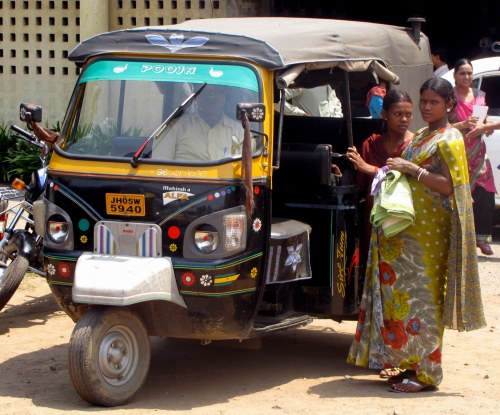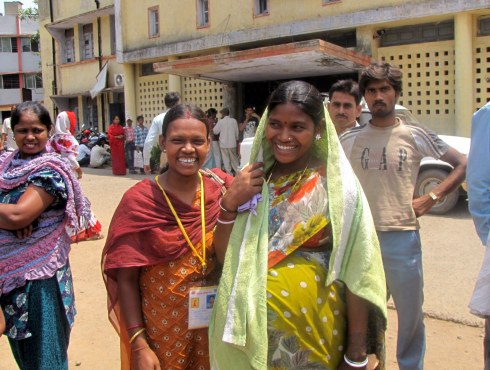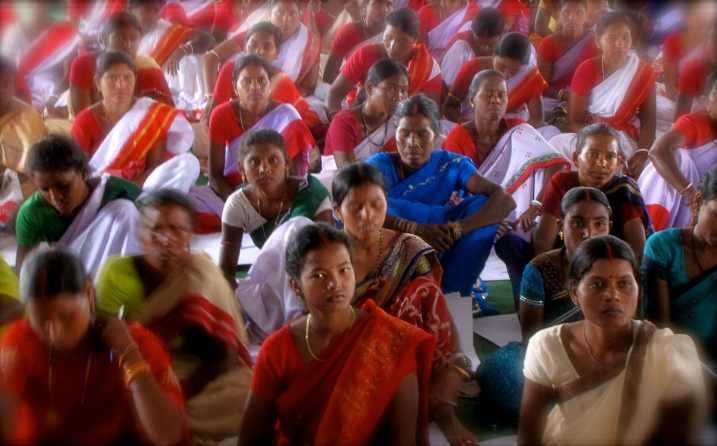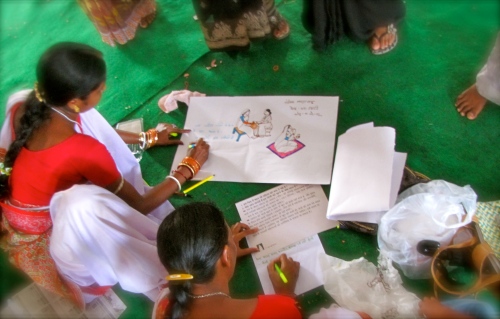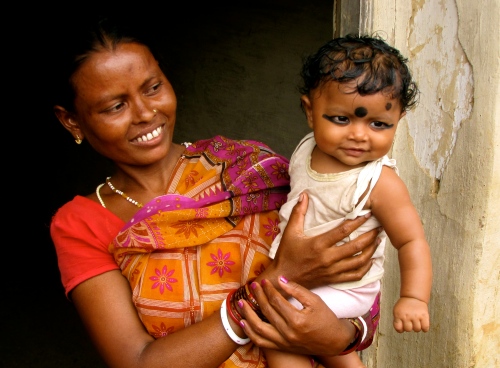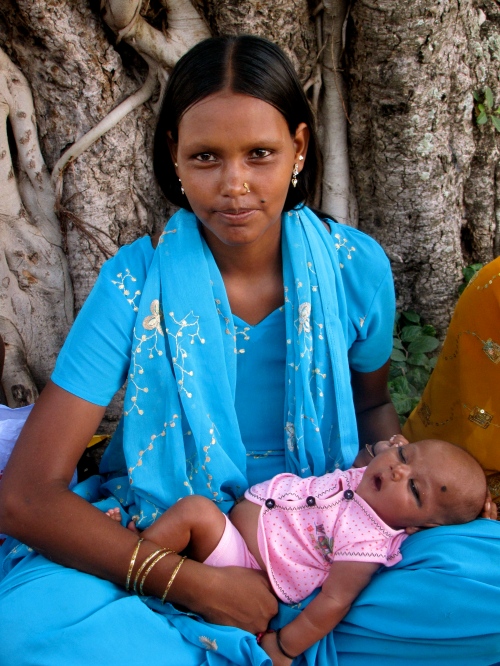This is the third post in a series on maternal health in rural Jharkhand, India.
At 4am, Radha’s body became completely stiff. Then came the convulsions.
Radha, a newly married young woman in a small village in rural Jharkhand, was pregnant with her first child and her due date was just one week away.
Radha’s story paints a personal picture of the issues that pregnant women face in rural Jharkhand–and it points to conceptual questions and unforeseen consequences of Janani Suraksha Yojana (JSY), a national program that aims to increase institutional deliveries across India. Her story raises big picture questions that merit further investigation, especially given the scope, cost, and potential of JSY, the largest conditional cash transfer program of its kind in the world. Radha’s story also sheds light on some of the implementation challenges and the pockets of the population that seem to be left out, beyond the reach of JSY.
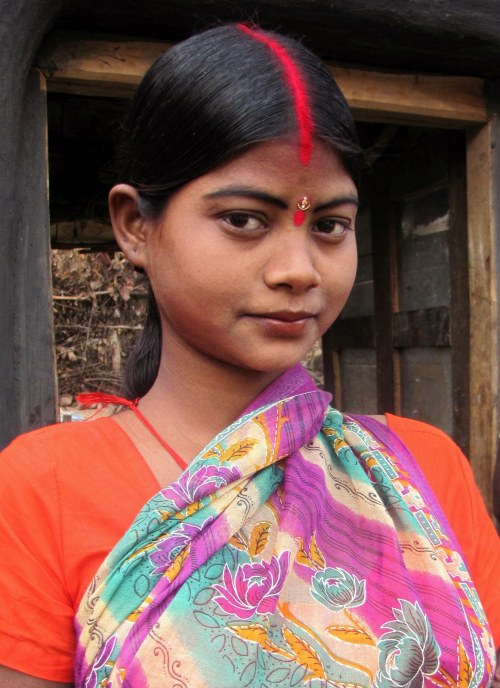
Radha wears dramatic sindor along the part of her hair, the unmistakable red powder that makes clear she is a married woman. Photo by: Kate Mitchell
Against the wishes of her in-laws, Radha had left her husband’s village and returned to her parents’ home in a small village in the Seraikela block of Jharkhand. She was planning to deliver her baby in her parents’ community and at home, just as her mother, Prema, had given birth to her at home 18 years earlier.
Radha’s decisions to return to her parents village and to deliver at home are not uncommon practices in India.
Returning to the parental village
In India, women are often married at a very young age. In rural Jharkhand, 73.4% (National Family Health Survey of India, NFHS-3) of women are married before the age of 18. Once they are married, they go to live with their husband’s families where they take on the often demanding role of daughter-in-law that traditionally involves cooking, cleaning, and collecting water and firewood for the entire family. It is an age-old tradition that once women reach the 8th or 9th month of pregnancy with their first child, they return to their parents’ community where they spend the final month(s) of pregnancy and deliver the baby. This tradition is often cherished by women as it offers them some much-needed respite from their daughter-in-law duties, and a chance to reconnect and spend time with their families.
Home delivery
According to the National Family Health Survey of India, only 40.8% of deliveries in India occur in an institution–and in rural Jharkhand, where Radha lives, significantly fewer women opt for institutional care with only 11% of babies born within health facilities.
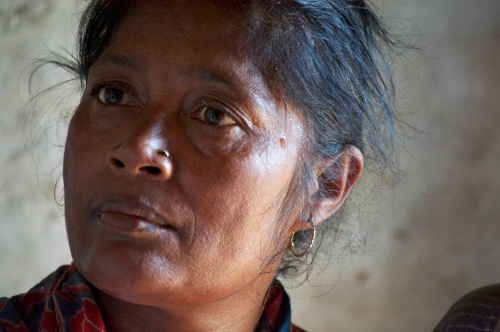
Prema, Radha's mother, is the mother of six children--Radha was the fourth, but the first to survive beyond one year of life. Photo by: Karl Gruschow.
According to Prema, Radha’s in-laws had recently learned about a government program that is providing a cash payment of 1650 rupees (approximately 40 US dollars) to women who opt for institutional delivery over the traditional practice of home delivery. Prema said that the decision of where Radha would deliver caused a conflict between the two families. She said that Radha’s in-laws wanted Radha to deliver in an institution in their district—and Prema did not seem to believe that their motive was entirely about a safe delivery.
It is unclear what motivated Radha’s in-laws to push for her to remain in their district for the delivery. Did they believe that institutional delivery was a safer option and want to keep her close to ensure that she delivered in an institution?
Or, were they pushing Radha to deliver within their district so that they would have access to the cash payment?
Was it a combination of the two—a promise that Radha and the new baby would receive care in the event of a complication, sweetened with a little cash?
Whatever their motives were, the conflict that arose between the two families is one unforeseen consequence of Janani Suraksha Yojana.
While a little tension between in-laws might not seem like such a big deal, it points to bigger questions about the unanticipated repercussions of providing women, who may or may not have the autonomy within their families to command how and when to use the money, with cash on a conditional basis linked to a new behavior, institutional delivery, that they may or may not want to adopt. The idea that JSY might be becoming a source of conflict among other families, as it is in Radha’s family, and influencing in-laws to try to keep daughters-in law in their districts for delivery, leaves me with several questions:
- To what extent might JSY be creating barriers for women hoping to follow the cherished tradition of returning to their parents’ community for the last month of pregnancy and delivery of their first child?
- What ethical considerations does cash introduce to women’s decisions about where to give birth? The money is obviously aimed at encouraging women to pursue a safe delivery, but the women involved are often younger than 18 and often have only limited capacity within their husband’s families to influence decisions about new behaviors.
- Who actually controls the money?
- Whom is actually incentivised by it?
If it is the parents and the in-laws who are most concerned with and/or motivated by the cash payment (and will have the most control over how the cash is used), how can JSY be modified to ensure that the wants and needs of rural women are not overlooked? How might policy makers ensure that JSY does not interfere with the tradition of going to the parental village for delivery or further restrict the autonomy of young newly married women to make decisions, while still promoting institutional delivery?
During our time talking with women in the Seraikela block of Jharkhand, it seemed to me that women were far more motivated by an awareness of potential complications and an assurance that they and their babies would be cared for than they were by the promise of a one time cash payment.
A few weeks back, we met a woman named Sita who had just delivered her second baby. Her first child is now four years old. Sita initially planned to deliver at home but when her labor seemed to go on for too long, she chose to go to an institution. In her case, this was a feasible and reasonably safe plan—as the institution was only a half an hour away from her home and her family had access to a vehicle that could be used to reach the facility. Sita explained that the reason she went to the institution was because she was afraid; “If I die, what will happen to my son?” To Sita, the cash seemed like a nice bonus—but far from a deciding factor.
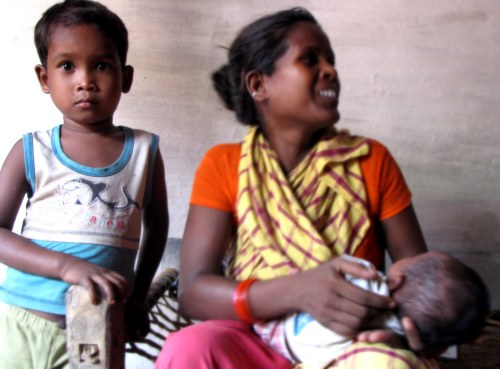
Sita, mother of a four-year old, chose to deliver her most recent baby in an institution due to her fears about who would care for her four-year old if she did not survive the delivery. Photo by: Kate Mitchell
This idea that women are motivated to seek care when they believe institutions will provide them with high quality care is illustrated by the three delays framework for understanding maternal mortality. The framework shows a direct arrow between the quality of care within the facility (perceived or actual) and a woman’s decision to seek care. This means that her perception of the quality will play a big role in whether she seeks care for the first time, but it also means that if the woman seeks care, and it turns out to be poor quality, she might not ever choose to seek care again and her experience might also influence the behavior of other women.
Through the National Rural Health Mission, the government has hired an extensive system of community health workers who are working to increase awareness and identification of maternal and newborn danger signs, and encourage women to seek care. Through JSY, the government is providing women with a cash payment that sometimes serves as an incentive and other times as a partial reimbursement for costs associated with seeking care. But, what happens when the women reach the institution? It is important to remember that the type of care they find will play a role in whether they (and their sisters, sisters-in-law, and friends) continue to seek care.
Just a few days ago, the Times of India ran a story about this issue:
“…The NRHM hired over 8.5 lakh* women as Accredited Social Health Activists (ASHAs), mostly village women with minimum Class VIII education, to provide preventive health services in villages including taking pregnant women for antenatal check ups, organising immunization camps, dispensing basic drugs and educating people about hygiene practices. About 6.5 lakh have completed their training and have started work. Though ASHAs have boosted the utilisation of public health facilities in many places, the facilities themselves have not been upgraded to take the increased load.”
Sita’s story combined with an understanding of the three delays framework makes me wonder what would happen if the government, who aims to increase institutional deliveries, took on the challenge of dramatically improving the quality of care within institutions as one of their strategies for increasing the number of women who deliver within health facilities.
In Radha’s case, it seemed that tradition, Radha’s parents’ wishes, and Radha’s own wishes would trump Janani Suraksha Yojana, the cash provided by the program, and the wishes of the in-laws. It also seemed that, for Radha and her parents, cash was not enough to persuade them to choose institutional delivery over home delivery. For she was home with her parents when the convulsions began, and she had no plans to go to an institution.
But when Radha’s family was awakened by her uncontrollable shaking, the trajectory of events changed course.
Radha’s story will continue in upcoming posts…
—————————————————————————————————————
*One lakh, part of the Indian numbering system, is equal to 100,000.
Note: We have changed the names in this series, in order to provide a level of privacy to the families who shared their stories.
Tata Steel Rural Development Society, my host organization for my fellowship, provided us with transportation and interpreter services. Many thanks to Shabnam Khalid for her help with translation.



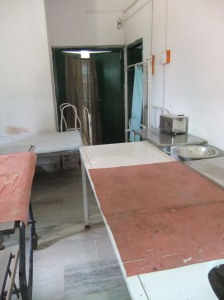

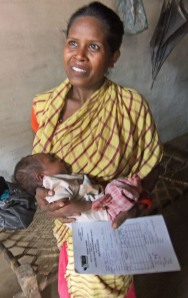
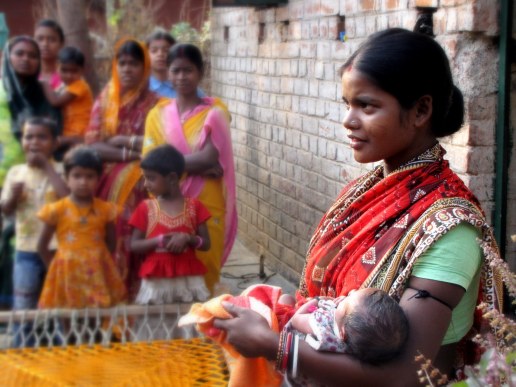
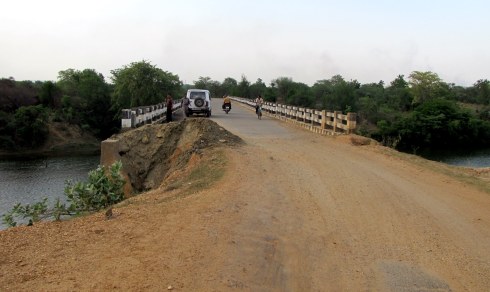 A collapsed road on the way from Jamshedpur to the Seraikela Block of Jharkhand.
A collapsed road on the way from Jamshedpur to the Seraikela Block of Jharkhand.